In this article, we’ll explain why it’s better to defrost hamburgers for cooking, but also how to grill frozen burgers if you have to.
Though some diehards would say otherwise, there’s nothing wrong with frozen burgers. It doesn’t matter whether you made them yourself, bought them from a butcher, or picked them up from the frozen section of the grocery store; frozen patties make sense if you don’t plan on eating them today.
Now that we’ve settled that debate — in my mind, at any rate — let’s move on to another. Is it ok to grill hamburgers from frozen?
We’ll start by discussing the benefits of defrosting your burger patties before cooking. From there, we’ll tackle any possible safety issues of grilling frozen burgers. Lastly, we’ll walk you through the best way to grill hamburger patties from frozen, step-by-step, including essential tips for the best results.
Are you ready for the coolest thing you’ll read today?
Jump to:
Defrosting Before Cooking is Better
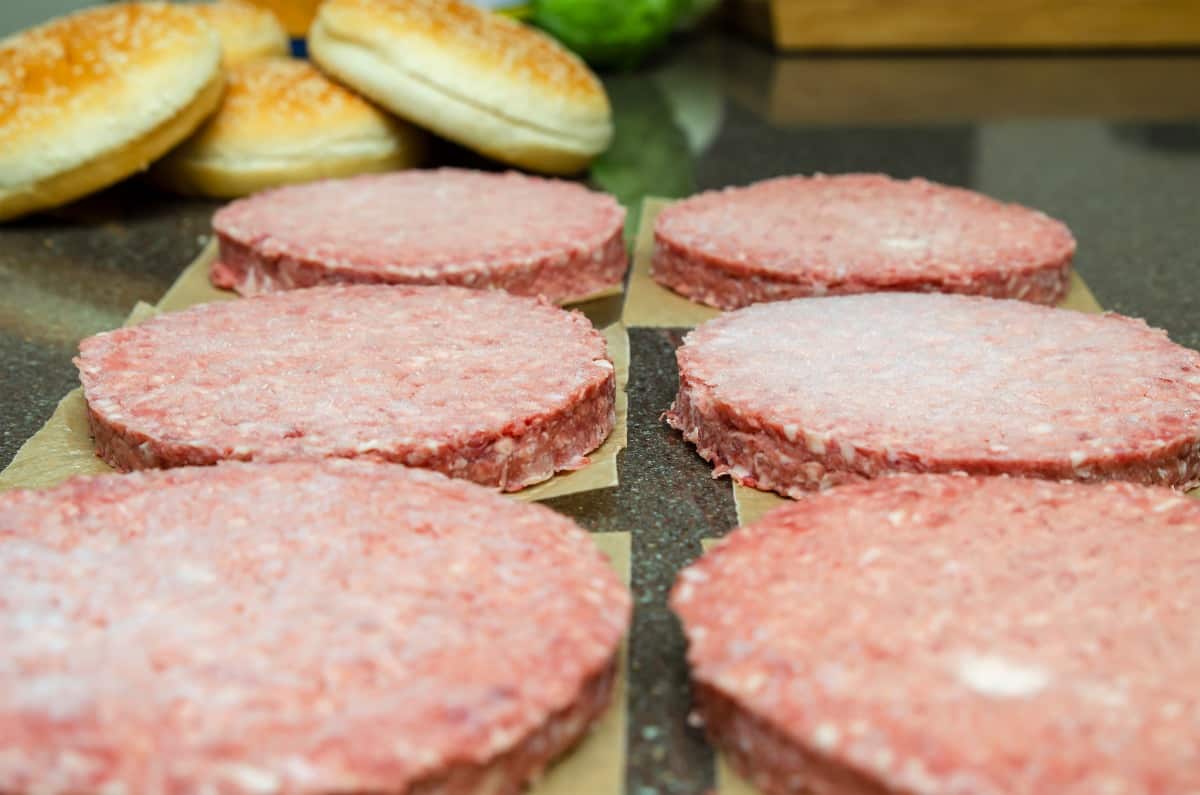
If you have the time, take a few minutes to defrost your burgers before they hit the grill.
Why?
Well, for one thing, they’ll cook a lot faster. A frozen burger may take up to twice as long to cook as a defrosted patty.
For another, it’s tricky to get an icy beef puck to cook through evenly. The safe temperature for ground beef is 160 °F, which means even the core must be at least that warm to kill any bacteria. It’s way too easy to overcook the outside before the inside is edible and safe to eat.
And, there’s flavor to consider. If you like to add seasoning to your patties, you’ll find it won’t stick worth a darn to a frozen surface, no more than you will on icy stairs in winter.
Frozen burgers can be defrosted overnight in the fridge on a plate, or you can put them in a sealed bag and immerse them in cold water. A microwave will do the trick, too. If you use the water or nuking methods, be sure to get them straight on the grill once thawed.
Is it Safe to Grill Burgers from Frozen?
Sometimes, despite knowing it’s better to defrost first, there just isn’t time. Does that mean you have to order in?
Nope! According to the USDA, it’s perfectly safe to cook burgers from frozen, as long as you cook them to 160 °F all the way through.
Now, how do we do that?
How to Grill Your Burgers from Frozen
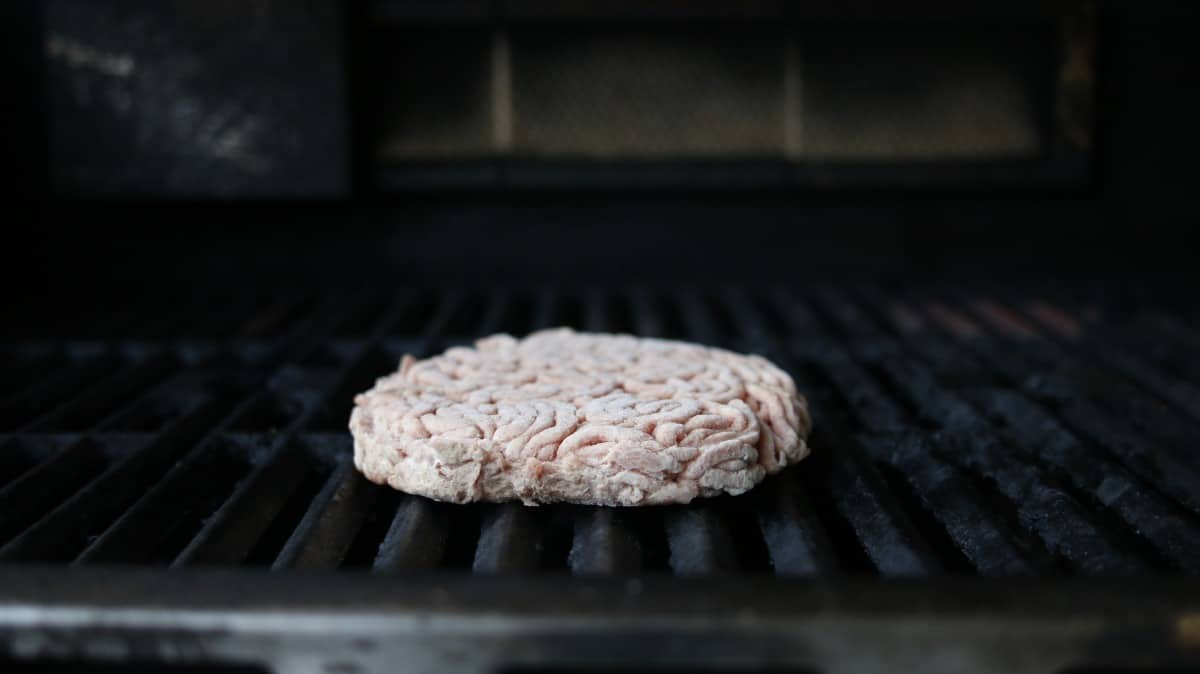
Glad you asked! As I said earlier, if you don’t do it right, you could end up with a burger that’s perfect in the middle but burnt to a crisp on the outside. Even worse, it could still be dangerously cold in the middle, and you’d never know by looking.
Of course, we never base doneness on appearance — always use your instant-read digital thermometer!
Here’s everything you need to do to cook a frozen patty to perfection.
Setting up Your Grill
Start by prepping your grill. Try to aim for around 325 °F, which is somewhat lower than you might normally go with. At that temperature, you’ll give the burger a fighting chance to cook through before the surface looks like charcoal.
Yes, it will take longer, but a little patience now will pay off in the end. Trying to cook frozen hamburgers on a searing hot grill will burn the surface long before the middle is done.
Alternatively, cooking for a long time over very low heat, in an effort to cook evenly, may just dry your burger out, leaving it chewy and flavorless.
Getting Your Patties Ready
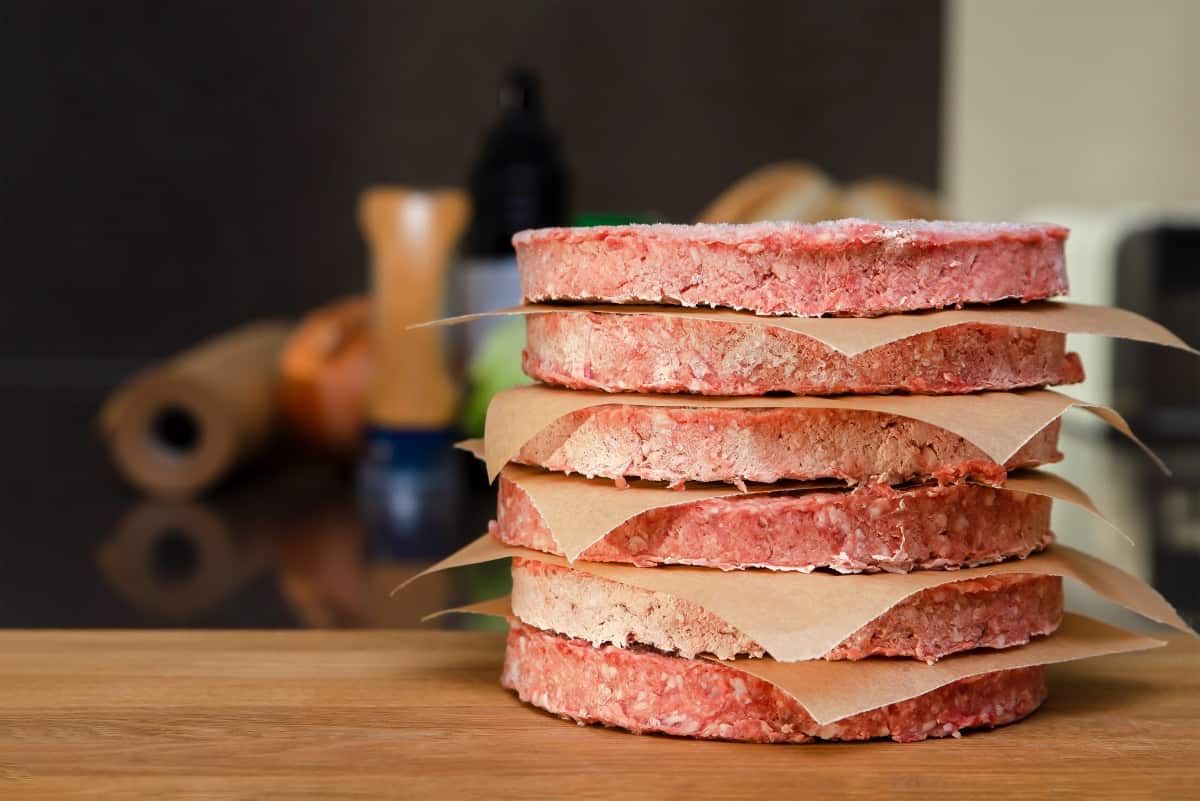
While the grill is warming up, you can prepare your patties.
Begin by separating them if they’re stuck together. Wedge a blunt knife or a small, stiff spatula (like the kind used for spreading icing on cakes) into any gap you can find between two patties and give it a twist. They should spring apart without too much trouble. Don’t use a sharp knife; it might slice the meat weirdly, and it might do the same to your hands.
If there are pieces of waxed paper stuck to the patties, run cold water over it to thaw just a bit of the surface. It won’t take long, and it’ll peel off neatly. Trying to rip the paper off a frozen patty can leave you with bits of it left behind when it hits the grill.
Don’t forget to wash your hands after handling your burgers. They may be frozen, but it’s still raw meat. Why take any chances?
Grilling
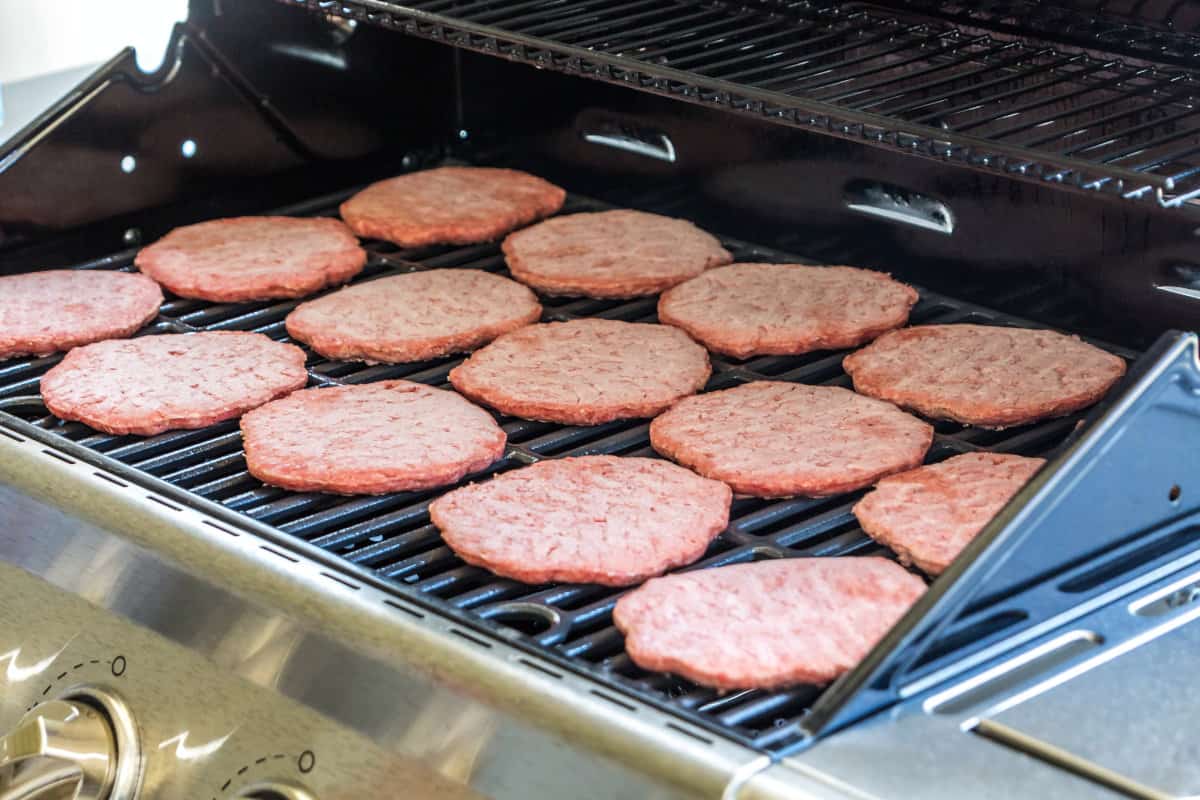
Timing will vary, depending on the thickness of the patties. Leave the lid open and place your patties on the grate, leaving at least an inch or two between each one.
As a rule of thumb, expect to cook on one side for five minutes before grabbing your spatula and flipping over to the other side. Keep flipping back and forth until you’ve reached 160 °F in the center of the burger.
After a flip or two, you can add seasoning or sauce, if you like; it’ll adhere to the surface now that it’s thawed.
It’ll probably take about 15 – 20 minutes to cook your burgers fully.
You could also try a 2-zone grilling set up to heat up your patties evenly. In a nutshell, you have all the direct heat on one side of the grill; either pile up your charcoal to the left or right or only turn on one burner.
Close the lid and let the heat build-up inside. Again, aim for about 325 °F on the direct heat side. Once there, place your burgers on the indirect heat side, away from the flames. Close the lid and leave them for about 2 minutes.
Next, open the lid and flip the burgers over. Wait another 2 minutes. Press the burgers lightly with the spatula to check if they’ve softened up. (Don’t press hard; you’ll only squeeze out the juices, and juices equal flavor!) If they have, move them to a medium heat zone closer to the fire but not directly above. Leave the lid up.
Continue flipping every minute or two until they seem fully defrosted or even cooked a bit. Now, you can put them over the flames to sear on those grill marks and add that charred flavor to the surface of the patties.
Check the internal temperature with your thermometer. If it seems like they’re going to burn before they cook through, move the burgers back to the medium zone to finish.
Careful With Flare-Ups
If you’re cooking over the flames or coals, watch out for flare-ups, those sudden bursts of flame that want to ruin your day.
Frozen burgers will release more water and fats than defrosted burgers, so there’s always a risk. Be ready with your spatula to move them to a safe zone — either a part of the grill away from the flames, or up on the warming rack.
Final Thoughts
And that’s how you save the day when you’ve forgotten to thaw your hamburger patties, and the crowd is getting hangry. It’s not fast, but it’s doable, and it’s completely safe.
For more awesome tips on grilling like these, search or browse the site for more articles, how-tos, and myth-busting. Plus, check out our unbiased reviews of the grilling gear you need — or need to avoid. Find something you like? Go ahead and share with your grill mates; just copy the link into your email, or, even better, share it on social. You can follow us on social, too, and stay current with what’s happening on the site and on the grill.
Thanks for hanging out today — now stop worrying and go cook those burgers!


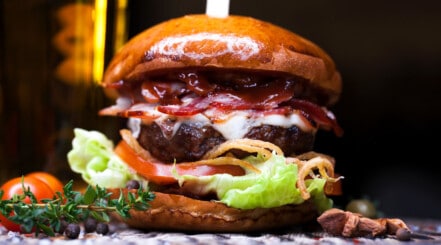
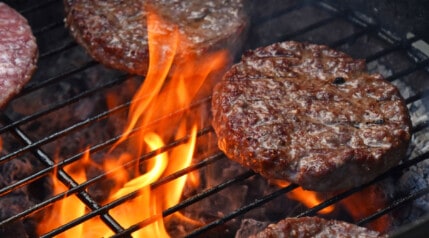
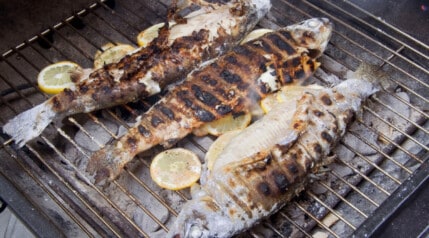
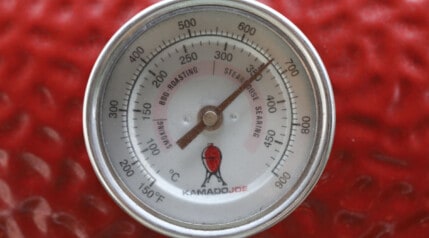
0 Comments